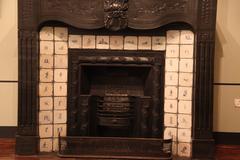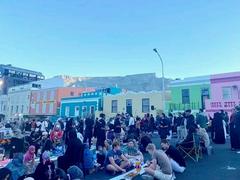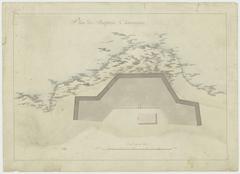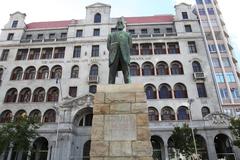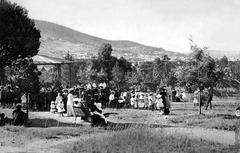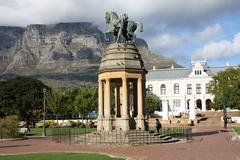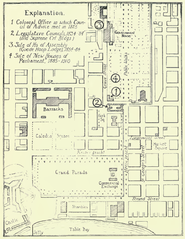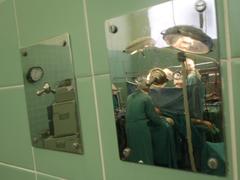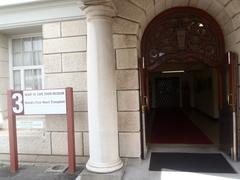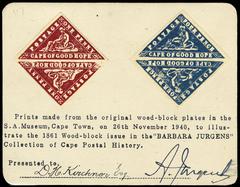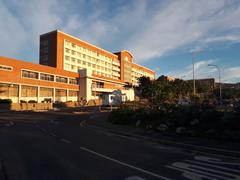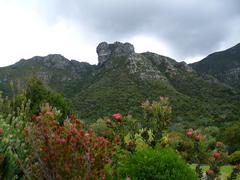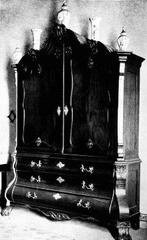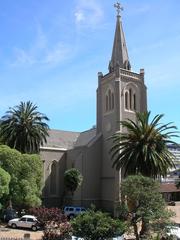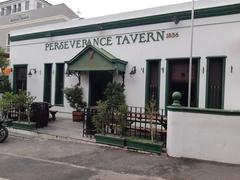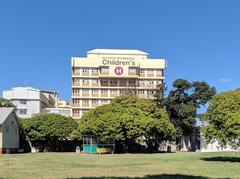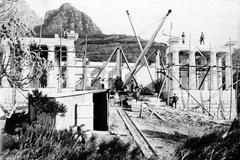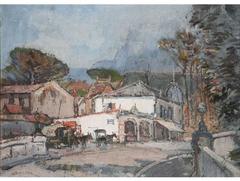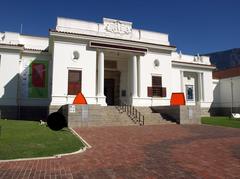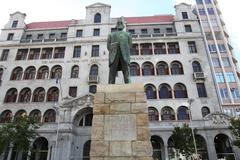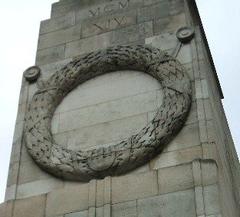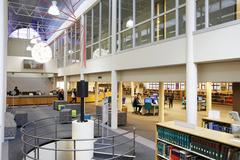
Rust en Vreugd Visiting Hours, Tickets, and Complete Cape Town Historical Sites Guide
Date: 14/06/2025
Introduction: Rust en Vreugd’s Place in Cape Town’s Heritage
Rust en Vreugd is a jewel of Cape Town’s colonial past, embodying the city’s architectural, artistic, and social history. Situated on Buitenkant Street, this late 18th-century Cape Dutch mansion stands as both a meticulously preserved historic residence and the primary home of the William Fehr Collection’s works on paper. With its grand teak construction, ornate classical façade, and richly restored interiors, Rust en Vreugd offers visitors an immersive journey into the complexities of South Africa’s colonial era (South African History Online). Today, it serves not only as a museum but also as a vibrant center for cultural education and reflection on Cape Town’s layered history.
This guide provides all essential details for planning your visit, including opening hours, ticketing, accessibility, highlights of the house and collection, as well as tips for exploring nearby attractions.
Quick Reference: Contents
- Introduction and Significance
- Historical Overview and Architectural Highlights
- The William Fehr Collection
- Visiting Hours & Ticket Information
- Accessibility, Facilities & Visitor Tips
- Guided Tours, Exhibitions & Events
- Nearby Attractions & Suggested Itineraries
- FAQs
- Conclusion & Planning Resources
- Sources and Further Reading
Historical Overview and Architectural Highlights
Origins and Construction
Constructed between 1777 and 1782 under the ownership of Willem Cornelis Boers, Rust en Vreugd is a quintessential example of Cape Dutch urban architecture. Its double-storey, flat-roofed structure, built primarily of teak, boasts a stoep (veranda) with an overhanging balcony supported by four fluted teak columns and Corinthian capitals. The grand entrance is adorned with a distinctive fanlight, attributed to Anton Anreith, one of the Cape’s most celebrated sculptors (South African History Online). The mansion’s layout—with reception rooms, a dining hall, bedrooms, and expansive cellars—reflects the social customs and domestic arrangements of the Cape’s elite.
Ownership and Preservation
Following Boers’s recall to Holland, Rust en Vreugd passed through several prominent hands, including O.G. de Wet and the Hopper family. Its transition into public ownership enabled its careful restoration as a museum, with attention to both architectural integrity and historical accuracy (South African History Online). The surrounding gardens, now a tranquil heritage site, evoke the estate’s original ambiance.
The William Fehr Collection: Artistic and Historical Treasures
Rust en Vreugd is renowned for housing the William Fehr Collection’s works on paper, including watercolours, prints, drawings, etchings, and lithographs from the late 17th to early 19th centuries (MapMyWay). These artworks provide a vivid visual record of Cape Town’s landscapes, architecture, social life, and diverse peoples under Dutch and British colonial rule.
Due to the delicate nature of these pieces, only a rotating selection is displayed at any one time, ensuring preservation while offering variety for repeat visitors. The William Fehr Collection is a critical resource for understanding the evolution of South African society and identity.
Visiting Hours & Ticket Information
Opening Hours
- Public Opening Days: Thursday and Friday
- Hours: 09:00 to 16:00 (some sources cite 09:30–15:30; check the official website before visiting)
- Closed: Saturdays, Sundays, Workers’ Day (1 May), Christmas Day (25 December), and during loadshedding (scheduled power outages)
Admission Fees
- International Visitors: Adults, children (5–17), pensioners, students: R80 each
- Local Visitors: Adults R50, Children (5–17) R30, Pensioners/Students (with valid ID) R30
- Free Entry: Fridays for South African pensioners and students (with valid cards), and on commemorative days
- School Groups: Booked R30, Unbooked R20
Tickets can be purchased in advance via Webtickets or at Pick n Pay stores across South Africa and Namibia. Online booking is recommended, especially during peak season.
Accessibility, Facilities & Visitor Tips
Accessibility
While Rust en Vreugd’s historic layout presents some challenges, recent renovations have improved accessibility, including ramps and adapted restrooms (Iziko Museums). Visitors with specific mobility needs should contact the museum in advance to ensure a smooth experience.
Facilities
- Restrooms available onsite
- Interpretive materials in multiple languages
- No onsite café, but nearby restaurants and coffee shops are within walking distance
Practical Tips
- Plan your visit for Thursday or Friday to ensure access
- Allocate at least 60–90 minutes for a thorough visit
- Check the city’s loadshedding schedule ahead of time
- Book tickets online to avoid queues
- Consider combining your visit with nearby heritage attractions
- Non-flash photography is allowed, subject to museum policy
Guided Tours, Exhibitions & Events
- Guided Tours: Offered occasionally and for groups; inquire directly or check the Iziko Museums events page
- Exhibitions: Temporary exhibitions and cultural events are hosted throughout the year
- Interpretive Displays: Panels and staff provide context on the building, art, and the lives of both elite residents and enslaved people who lived and worked at Rust en Vreugd
Nearby Attractions & Suggested Itineraries
Rust en Vreugd’s central location makes it an ideal starting point for heritage exploration. Consider these nearby sites:
- Castle of Good Hope: South Africa’s oldest surviving colonial building
- District Six Museum: Chronicling forced removals under apartheid
- Company’s Garden: Historic park and botanical gardens
- Iziko Slave Lodge: Museum of slavery and human rights
- Greenmarket Square: Craft markets and local culture
A half- or full-day itinerary combining Rust en Vreugd with these sites offers a comprehensive introduction to Cape Town’s history (MapMyWay).
Frequently Asked Questions (FAQ)
Q: What are the opening hours?
A: Thursday & Friday, 09:00–16:00; closed weekends and major holidays.
Q: How do I buy tickets?
A: Online via Webtickets or at Pick n Pay stores; online purchase is preferred.
Q: Is the museum wheelchair accessible?
A: Yes, but access is limited by the historic structure. Contact the museum to discuss specific needs.
Q: Are guided tours available?
A: Yes, for groups and sometimes individuals. Check the events page or book in advance.
Q: Can I take photographs?
A: Personal photography is permitted without flash or tripods. Commercial photography requires permission.
Q: Does loadshedding affect operations?
A: Yes, the museum closes during scheduled power outages. Check the loadshedding schedule before visiting.
Enhance Your Experience
Explore online resources such as virtual tours, digital maps, and high-quality images of the galleries and gardens on the MapMyWay website. Download the Audiala app for audio guides and interactive tours, and follow Iziko Museums on social media for updates on exhibitions and special events.
Conclusion: Why Rust en Vreugd Matters
Rust en Vreugd remains a cornerstone of Cape Town’s cultural landscape, offering a window into the artistic, social, and political life of the Cape from the late 17th through the early 19th centuries. Its architectural beauty and expertly curated William Fehr Collection make it an essential destination for history enthusiasts, art lovers, and anyone interested in the evolution of South African society. The site’s careful preservation and commitment to accessibility ensure that future generations can continue to explore and reflect on its multifaceted legacy (South African History Online, Iziko Museums, MapMyWay).
Sources and Further Reading
- Rust en Vreugd Cape Town: Visiting Hours, Tickets, and Historical Insights
- Rust en Vreugd: A Must-Visit Cape Town Historical Site
- Rust en Vreugd Visiting Hours, Tickets, and Guide to Cape Town’s Historical Gem
- Rust en Vreugd Visiting Hours, Tickets & Guide to Cape Town Historical Sites

